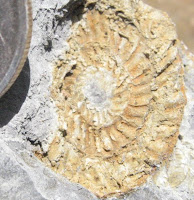Malaysia is a country which consists of two parts, peninsular Malaysia and East Malaysia (Sabah & Sarawak or Borneo). The capital of Malaysia is Kuala Lumpur and divided into 12 states, each having own capital town. The climate is tropical characterised by uniformly high tempaerature and seasonal rainfall. Most of the region is covered by a tropical rain forest.
Up to 1903, all geological work had been reconnaissance. In 1903, J.B. Scrivenor was appointed as the first government geologist and this begun the new era of geological work in Peninsular Malaysia. Systematic mapping by the Geological Survey was started in the 1930's. Since the 1970's there has been a rapid increase in the geological knowledge of Peninsular Malaysia. The latest geological map (1:50,000) of Peninsular Malaysia was published in 1985 by the Geological Survey of Malaysia (now known as Minerals and Geoscience Department Malaysia).
On the basis of tectonostratigraphic terrains, Malaysia is a part of Sibumasu block and East Malaya block. Peninsular Malaysia can be divided into three belts; West Malaya, Central Malaya and East Malaya. Each of these three belts is characterised by its own stratigraphy, igneous suite and geological history.
In West Malaysia, the oldest rocks exposed are Cambrian in age, consisting of about 3000m of predominantly sandstone-shale deposited in a shallow water and deltaic environment. This rocks well expose in northwest Peninsular Malaysia and are conformably overlain by the thick sequence of shallow water limestone of Ordovician to Silurian age. Both sequences then overlies by the rock of Upper Devonian to Lower Carboniferous which is dominated by mudstone, sandstone and thin of pebbly mudstone. Limestone and siliciclastic of Triassic age are best developed in northwest Peninsular Malaysia and were intruded by granite of latest Triassic to Jurassic age.
In Centrel Malaya, the oldest rocks exposed are Silurian-Devonian rocks called as Bentong Group. These rocks exposed in a narrow zone and consists of schists, amphibolites, conglomerates and other siliciclastic deposits with some bodies of serpentinite and melange deposits. During Triassic period, deposits are dominated by marine sediments and overlain in some areas by Jurassic-Cretaceous continental deposits. Marine Permian and Triassic rocks were deposited over the Bentong Group and cover the greater part of the Central Malaya.
East Malaya is dominated by Carboniferous and Permian clastics, carbonates and volvanics. Triassic sediments absent and Upper Jurassic continental rocks lie unconformably on the Carboniferous-Permian sequence.
The main intrusive body in west Malaya is the Main Range Granite (S-type) extending 3000km from the southern tip of Peninsular Malaysia to Northern Thailand. In Central Malaya granitic intrusives extend from the Thai border southwards to Johore. In East Malaya, granites are abundant froming elongated north-south ternding bodies. These granites are classified as I-type. Source- Dr. Kamal Roslan, UKM
Up to 1903, all geological work had been reconnaissance. In 1903, J.B. Scrivenor was appointed as the first government geologist and this begun the new era of geological work in Peninsular Malaysia. Systematic mapping by the Geological Survey was started in the 1930's. Since the 1970's there has been a rapid increase in the geological knowledge of Peninsular Malaysia. The latest geological map (1:50,000) of Peninsular Malaysia was published in 1985 by the Geological Survey of Malaysia (now known as Minerals and Geoscience Department Malaysia).
On the basis of tectonostratigraphic terrains, Malaysia is a part of Sibumasu block and East Malaya block. Peninsular Malaysia can be divided into three belts; West Malaya, Central Malaya and East Malaya. Each of these three belts is characterised by its own stratigraphy, igneous suite and geological history.
In West Malaysia, the oldest rocks exposed are Cambrian in age, consisting of about 3000m of predominantly sandstone-shale deposited in a shallow water and deltaic environment. This rocks well expose in northwest Peninsular Malaysia and are conformably overlain by the thick sequence of shallow water limestone of Ordovician to Silurian age. Both sequences then overlies by the rock of Upper Devonian to Lower Carboniferous which is dominated by mudstone, sandstone and thin of pebbly mudstone. Limestone and siliciclastic of Triassic age are best developed in northwest Peninsular Malaysia and were intruded by granite of latest Triassic to Jurassic age.
In Centrel Malaya, the oldest rocks exposed are Silurian-Devonian rocks called as Bentong Group. These rocks exposed in a narrow zone and consists of schists, amphibolites, conglomerates and other siliciclastic deposits with some bodies of serpentinite and melange deposits. During Triassic period, deposits are dominated by marine sediments and overlain in some areas by Jurassic-Cretaceous continental deposits. Marine Permian and Triassic rocks were deposited over the Bentong Group and cover the greater part of the Central Malaya.
East Malaya is dominated by Carboniferous and Permian clastics, carbonates and volvanics. Triassic sediments absent and Upper Jurassic continental rocks lie unconformably on the Carboniferous-Permian sequence.
The main intrusive body in west Malaya is the Main Range Granite (S-type) extending 3000km from the southern tip of Peninsular Malaysia to Northern Thailand. In Central Malaya granitic intrusives extend from the Thai border southwards to Johore. In East Malaya, granites are abundant froming elongated north-south ternding bodies. These granites are classified as I-type. Source- Dr. Kamal Roslan, UKM





















































